[Techie Tuesdays] Sandipan Chattopadhyay — the statistician behind the 160x growth of Justdial
Sandipan Chattopadhyay is the tech brain behind MoneyControl.com and Justdial’s digital expansion. As CTO, he scaled Justdial from 30,000 calls/day to 4.8 million user queries/day in seven years. His love for statistics and his madness has led him to do things he wouldn’t have imagined earlier. He makes his most important decisions based on his guts (and not logic), and he doesn’t think that India has a good startup ecosystem. Why? We explore in this week’s Techie Tuesdays an extraordinary techie whose work touches the lives of nearly one crore Indians.
It’s almost midnight and Sandipan Chattopadhyay has just come back to his hotel room from a hackathon. He puts his three-year-old daughter Sampriti to sleep and sneaks out of the room to head back to the hackathon. Without him realising it, she walks up behind him and asks, “Are you going back to the hackathon?” This incident, which took place almost a couple of years ago, says a lot about Sandipan’s relationship with technology and how closely attached his family and profession are. He’s a man of brutal honesty, who’s obsessed with building solutions for the next 500 million.

Sandipan was among the guys who built Tata’s first website, Tata.com. He co-founded MoneyControl and worked on (building) digital platforms for Unilever, Hyundai, IndiaInfoline, and others, before heading technology for Justdial. An alumnus of the Indian Statistical Institute, Kolkata, and IIM Calcutta, Sandipan loves mathematics and simplicity in life more than anything. As we take you through his journey in this week’s Techie Tuesdays, we hope you come across some valuable lessons for your own life and startup.
An orthodox family and a rebel child
Sandipan was born in Uttarpara town in the Hooghly district of West Bengal. He remembers it as a sleepy place, which was more of a village than a suburb, where he learnt fishing and climbing trees. His father was an engineer who made a bold move to become at entrepreneur at the age of 45, while his mother was a housewife who was into music big-time. She even tried to force Sandipan into Bengali Rabindra Sangeet. He eventually did get into music, but world music instead. He recalls,
“I was from an extremely orthodox family. I had my sacred thread (ceremony) at eight years of age, but I tore it off after a year, and my family accepted it.”
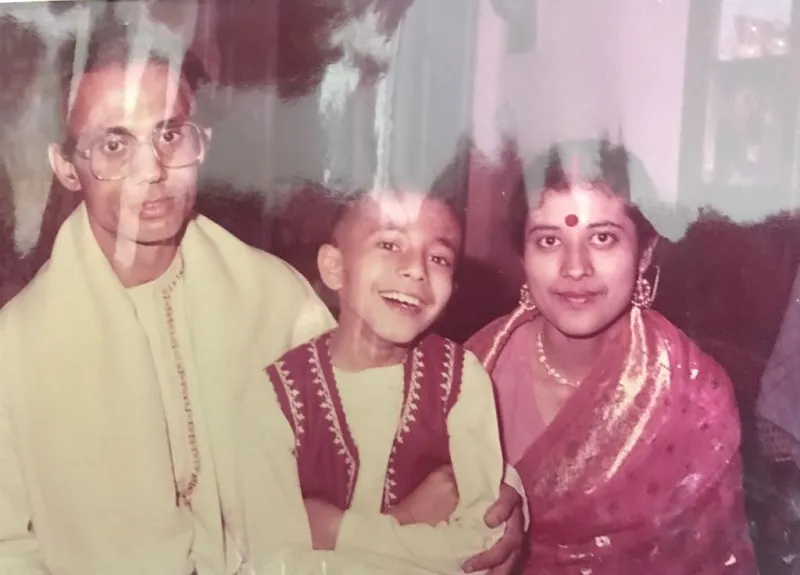
Somewhere, his rebellious nature was accepted, which he counts as the biggest support he got from his parents. Sandipan’s grandfather has had the biggest influence in his life. He was a freedom fighter who had been working since British era as an educationist and retired as secretary of the West Bengal education system.
When Sandipan moved to Kolkata (then Calcutta), he went to a government school, where he found the vernacular school syllabus very regressive. But soon, he learnt that knowledge is independent of language, and his love for the local language grew stronger. Mathematics became his favourite subject because his teacher told him that it’s the only subject that you don't have to study (just understand). Sandipan was an average kid who would study only at the time of his exams.
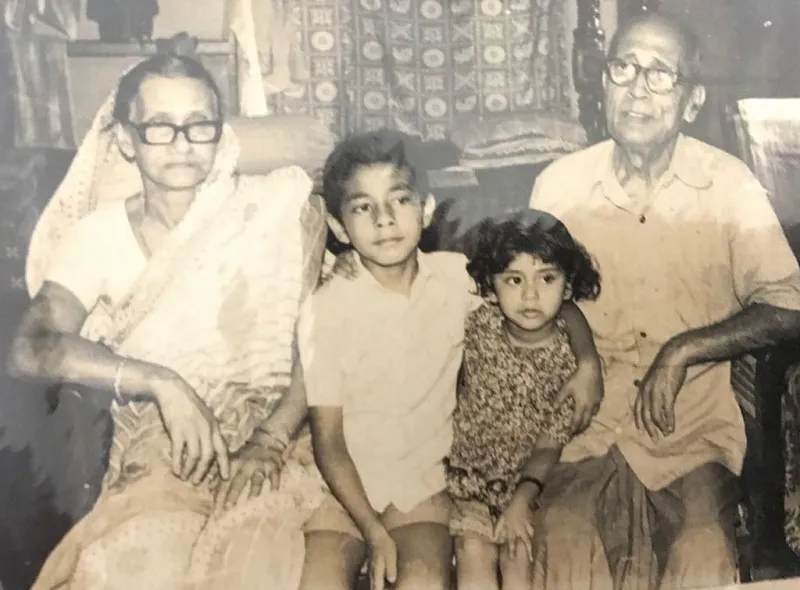
He sat for all engineering entrance examinations and got through most of them comfortably. In this process, he came to know about the Indian Statistical Institute (ISI), and decided to write its test, primarily for two reasons:
- It was the first selection test he faced in his life. While everywhere else it was mere elimination, ISI was choosing. Its batch size varied, and the most important thing that mattered was if 'you are in for it'.
- Sandipan felt hat he was valued more there and found himself fitting in as well.
Brimming with confidence, he fought his family and decided to join ISI. Since then, he has been on his own.
Also read: Meet Arun Ganesh, the 29-year-old map man of India
ISI:logic::IIM:simplicity
Sandipan’s first class at ISI was taken by the well-known mathematician PSSNVP Rao, who walked into class and wrote on the board:
5x4=?
When someone answered 20, he asked why and explained how mathematics is a language of logic. In Sandipan’s next class, another professor proved that the theory of induction is a valid proof. One day, a professor made students sit by the side of a busy road and asked them to just observe, which in turn taught students the observation bias. In the last semester, everyone was given a data bank that they had to look into, define a problem, and find the solution. ISI followed a very different way of learning, based on unlearning and relearning, which Sandipan feels is needed in India.
He recalls an incident where he got a summer project for all 56 students (a first at ISI), “I just walked into NDDB (National Dairy Development Board) and said, ‘We're students. In the US, they give work to students, so why can't you?’ The guy smiled and agreed. We learnt how to conduct real surveys.”
The students went to nearby villages and conducted a study on the possibility of launching milk products like curd and srikhand (only milk was available then). They each had two weeks of work and got paid handsomely for it at Rs 1,200 (in 1993).
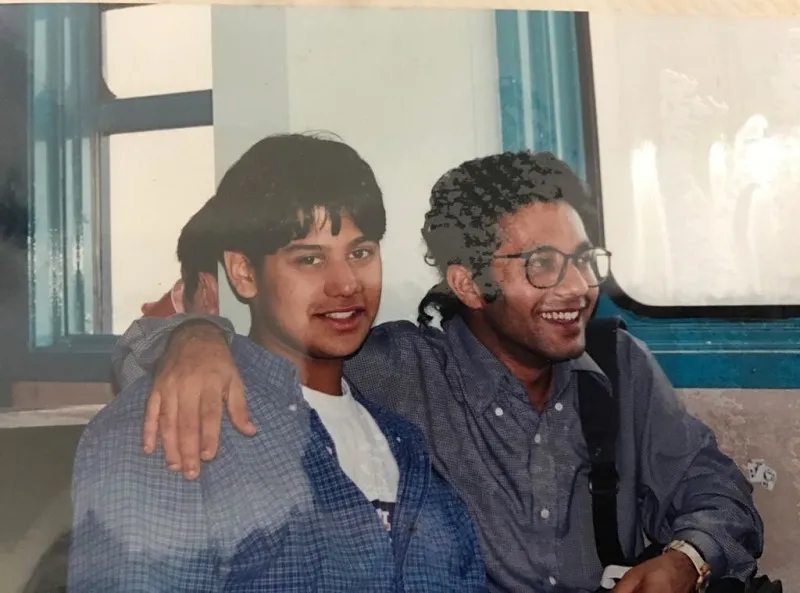
At that time, ISI was one of the few institutes where the work on NLP (Natural Language Processing) was taking place, which got Sandipan interested and sowed the seeds for his future work. He realises that whatever he did, be it MoneyControl or Justdial, the basic algorithm is all about enabling people to search and to present data in a way that they can comprehend.
Though Sandipan didn't find himself fitting in well at IIM Calcutta, he remembers one particular incident with a professor that taught him an important lesson in life. Prof. Ashis Chatterjee once gave him a mathematical problem that took him four days to solve. He told Sandipan how he overcomplicated the problem and proved how an 8th standard guy could solve it. It taught him that solving the problem isn't important, but keeping the simplicity intact is.
Sandipan spent a lot of time in the labs, where he learnt programming on his own. He believes that his teachers, rather than the courses, have been a big influence on him.
Also read: Meet the chief architect of Aadhaar, Pramod Varma
Madness strikes
Sandipan didn't take the campus job at IIM. Instead, he joined Dais Infotech, a joint venture of Webel (West Bengal Electronics Industry Development Corporation Limited) and MIT Media Labs, as a product manager. The company worked on touch screen-based products (called multimedia then). Sandipan mentioned that the company didn't do well, but that some of his former colleagues are part of the who's who of the world today.
Sramana Mitra, Founder of Dais Infotech, told him, "As long as you learn something and give back to the community, this startup is a success." This taught Sandipan what real entrepreneurs want.
He went on a three-month backpacking trip to Europe and came back with a feeling that he didn’t want to shift there. Instead, he wanted to make India as advanced as Europe. As he was keen to leave Kolkata at the time, he moved to Mumbai, to his colleague's place on Mahakali Caves Road. He walked out of the house looking for a job, saw the Tata Interactive Systems building, and walked right in. Given his diversified background, the people at TIS were confused as to whether he should be considered a techie, a designer, or a management guy. As a result, he was interviewed by the CEO, the marketing guys, the design guys, the tech people, and even the copy guys. Eventually, he joined the tech team and became the first guy to work on Tata.com website.
He set up the first mail server at TIS on a silicon graphics machine. Asheesh Saksena, now the CSGO of BestBuy, was Sandipan’s immediate boss at TIS. He used to tell him,
You're mad. Stay mad. It's great to be mad. Never give up on your ideas and the great things you want to do.
Sandipan’s shot to prominence in TIS was when he turned around a project that was almost doomed. The project, named Innovations (by Unilever), aimed at building a system to get the organisation’s R&D work across the world in sync in order to avoid any duplication of efforts. Earlier, Sandipan also worked on an 'on-demand tutor', which allowed syncing of the slides (with time) with the help of an authoring tool, which enabled anyone to publish a video (of a speaker presentation) and slides within three hours.
Speaking of his biggest learning from his experience at TIS, Sandipan says,
For very important things, I don't trust my logic, I trust my gut. Because somewhere, my experience has taught my gut to be more right than logic.
Turning entrepreneur at 26
At a friend’s house party, Sandipan met Victor Fernandes, with whom he later co-founded MoneyControl. He recalls, “We discussed why people disrespected equity in our country and think of it as gambling. Our contention was that if India has to become a country that respects entrepreneurship, it has to respect equity first.”
The duo thought of building a data analytics platform (and not news) in the beginning, which was more inspired by US-based fool.com than by Yahoo Finance or MoneyCentral, as it was more appealing to the common man.
Sandipan then started E Dot Solutions with Sanjay Sarkar, an alumnus of National Institute of Design, in 1999. E Dot Solutions handled the work of MoneyControl, along with its other clients, including NSE, BSE, 5paisa, IndiaInfoline, and Hyundai. At one point of time, four out of five top finance websites were built and managed by E Dot Solutions. Sandipan and Sanjay started doing 'foresight' projects, which they thought would cater to people’s needs in the future. The company built India's first vendor based itinerary systems — NexTenders.
Related read: Meet Sauvik Banerjjee, a Ranji trophy player who went on to architect Reliance Jio
MoneyControl — platform and lessons
Sandipan thinks that MoneyControl became popular because it gamified things. The platform introduced two games — intelligent investor and savvy trader — which were basically telling people to shadow practice before investing. They even gave away (cheap) stainless steel card holders and glasses as prizes to winners. Sandipan explains the entire theory behind gamification,
People remember 10-15 percent of what they read, and about 20 percent of what they hear, and here, it goes as high as 80 percent when you read, hear, and interact with the information. As people started playing games, they realised that there's more to it.
The platform was built on PHP and Oracle initially. Since the company couldn't afford licences (Oracle), Sandipan led the way to build their own intermediate data engines. These data engines were fed by the Oracle connections, which were taken as data repositories to do all manipulation. The team used a lot of file systems to save cost. MoneyControl had inbuilt online charts, which no one else did. They were built using HTML for the low bandwidth of India through a very simple mathematical ploy.
Sandipan says, “It was very difficult to find people, but very easy to train people. It took one and a half years to build and train the team and launch the products.”
While working on Mundu (and other GeoDesic's product), which counted Justdial as its customer, Sandipan met VSS Mani for the first time. He liked Mani's vision and saw the chance for bringing about social change through Justdial by giving access to information to more people. He says, "When I learn something from someone, I work with that person."
Between R&D projects (which didn’t pay well) and the other ones (which fetched good amounts), E Dot Solutions was going through a tough time striking a balance. Eventually, the founders found it wise to merge it with Geodesic, which was, in any case, keen to acquire it. Sandipan made sure that E Dot Solutions was maintained as a department of Geodesic. He didn't make much from the $2 million acquisition, but when he looks back, he finds that the best part of the company is the fact that almost two-thirds of the employees (150 at the time of acquisition) are entrepreneurs now.
The Justdial journey
When Sandipan joined Justdial, he believed that the categorical search would work better, whereas Mani was keen on continuing with the keyword search. The sweet spot lied somewhere in between. In the first six months, Sandipan made the mistake of programming the stuff. Only after that did he realise that for every rule, there are numerous exceptions. They then changed their paradigm to a learning-based system. Even those who were writing programs could not predict what the software could do. They could explain why it would do so. Sandipan says,
“Search is not a formula, it's a perception. There's no logic or rule to things like why a guy in Mumbai will prefer to travel North-South rather than East-West because he has to cross a railway line. The solution is to learn from experience. And every result and action taken on the result refines the next search. So, basically, you let people choose the result.”
The website (Justdial.com) was the first thing that went live in Justdial after Sandipan joined. Next was the IRO (information retrieval officer) module, which took seven months to develop. It had auto suggest change, which handled even misspellings and was of immense help to IROs. The tech team further built the marketing module and the telemarketing module.
Justdial had a lot of systems under the hood. They wrote an algorithm to make sure that the user receives the mail (with the list of places he inquired about) within 10 seconds of his call with an IRO. For this, they had to integrate 70-80 things, look at the observed moments, and for whichever had a failure path, bypass that and go to a success path. Sandipan told his colleagues, "If someone looks at Justdial and says, ‘Wow! What good tech!’ you've screwed up. But instead, if they say, ‘What's the tech in this? This is how it should be. What do you guys do sitting all day?’ then, you've done your job." In a mass market product, the key aspect of technology is that it shouldn't be visible, perceivable, and over logical.
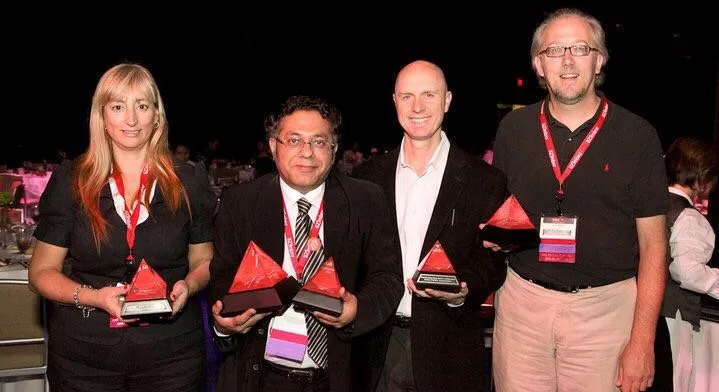
Tech stack and scale @Justdial
Justdial tech stack is CLAMP(LAMP with C language). Sandipan made sure that whenever they had an idea, they quickly made a PoC (proof of concept) and went live. He says, “We had the heart that no matter what the market throws back at you, you can resolve it and get back to the market very fast.” They had three tracks:
- Get it up: If you get it up and there's no traction, then forget it. You save a lot of engineering time.
- Keep it running: You keep it running only when there's a need.
- Make it the best in the world: Whatever lasts in the onslaught of the market selection, you keep on making it the best.
Sandipan used to say that there's a reason it's called LAMP and not AMPL or anything else. If you read LAMP in reverse order, it’s:
- PHP: The first proof of concept will happen in PHP layer.
- MySQL: Once it's(PoC) stabilised, it’s moved to database structure to support and optimise that.
- Apache: Then it’s moved to web server configuration and caching to make it the most perceived speed concept.
- Linux: Then scaling is done, which is in the kernel part.
At the end, all the parts are taken and made into the best C components so that anyone can use it.
Sandipan believes that Justdial was working very well even before he joined. He just worked on making it more scalable. When he joined the company, it was clocking almost 30,000 calls per day, and the day he left the company (in December 2015), there were 4.8 million user queries in a day. He says,
“The usage grew because our data and data capacity grew, and our search improved. We just listened to the market. We developed the confidence in the team that we knew the system, that we knew technology better than anyone asking us what they want. And we could translate that want to a need, and build for that need.”
Sandipan believes that the transparency of business operations is one of the biggest prerequisites of scale. Justdial was serving mutually orthogonal categories. In this case, a simple way could be to segregate the database (of each category) into one server set per category.
Sandipan recalls that the biggest technical challenge at Justdial was handling the petabytes of data (more voluminous because it’s voice data). They also had to keep backups and records as Justdial data is often asked for by the police and law enforcement agencies. Sandipan’s team wrote many MySQL modules in C that did this job. They replicated data using MySQL as a very dumb database server. They separated the learning and the execution into two separate servers and timeplexed it. Sandipan says,
“We didn't use the cloud. I was very sure that the compute we were doing was much bigger, and the cloud infrastructure takes away 20 percent of the infrastructure. If I could schedule it better and use the same machines to learn when not in usage, I was using the maximum buck of the machine. I had everything in control. The learning, which used to take 12 hours, came down to an hour, and then to 45 minutes. It again went to six hours when we started trying new things.”
This way, the team gave themselves leeway to do more innovative things with the time they had.
Building teams
When it came to building teams, Sandipan was willing to take flak from management but would not recruit a wrong fit. He would not have an upper limit or a lower limit either. He believes that if people change, then it becomes necessary to fire them, as they will otherwise pollute the whole environment. He adds, “If you got more than the required number of people and they are all a good fit, take them and find good work for them.”

Sandipan emphasises that Justdial’s low attrition rate is one of the reasons it could grow stably. He recalls the task of building the tech team at Justdial as a tough one because not many techies wanted to join a call centre. He took some crazy decisions then, like hiring the whole clan (gaming) of eight people by just interviewing one gamer. He explains, “I knew that anyone who played Ragnarok has a mathematical liking. And I was looking for people with that mindset.”
Attitude matters the most to Sandipan and he would not mind taking a less capable person with a complete hunger and a willingness to go to the last mile.
Sandipan realises that he has changed a lot after becoming a father. He recalls being more of a popularity seeker than really responsible and caring boss. He says, “I learnt the value of saying no and being harsh to bring out the best in a person.”
“I don't think we have a good startup culture”
Sandipan believes that a country's future depends on the nature of its startups, and that, unfortunately, India doesn’t have the ideal startup culture required at this stage. He says,
I don't think we have a good startup culture. It's very top heavy, endowment-based (startup culture), and not struggle-based.
He further thinks that in the so-called success of the startup culture, we have completely vacuumed the most important resource of a startup, which is access to good talent. He adds, “By throwing money at problems, people have spoiled the ecosystem.” According to Sandipan, while we do have very talented people, they've become dull and rusted, and are not as competent as their international peers.
He also blames the Brahminical thinking of the ecosystem, where it’s believed that unless you're from IIT-IIM, you don't have the pedigree to form a startup. In his experience, he counts Mani and Victor as some of the sharpest people who knew their subjects and dreamed in the business but didn't belong to these institutes.
According to Sandipan, entrepreneurs often overestimate their ability to understand. He says,
Everyone thinks of themselves as Steve Jobs, but they don't understand Steve Jobs. They think his speech and arrogance defines him, but miss the point that he was a great team player. He would push you hard if you didn't deliver what was expected, but he would never interfere in what you were doing or micromanage or undermine your intelligence.
“Keep it simple, not simpler”
Sandipan has two postulates about startups:
- True solutions and lasting businesses come when a startup works out of empathy. When a solution comes from the guy who's actually suffering from the problem, it has much more empathy. It lasts, it shapes, it mutates, and it adapts. We're seeing the opposite — most of the solutions come out of sympathy.
- Big scopes will come from the next 500 million. Our entrepreneurs have to come from there. If our system is biased towards disregarding them, we'll only have theoretical, on-paper startups, with no impact on social life.
Though Sandipan can help startups by putting in money, he knows that his strength is technology. He explains, “If I give Rs 10 to an entrepreneur or if I spend Rs 10 on his/her behalf on technology while adhering to his/her directions, I'll be able to give him/her more value for my Rs 10.”
And hence, Sandipan, along with two of his colleagues (Srinivas Koora and Rajesh Dembla) from Justdial, started Xelpmoc Design and Tech Pvt Ltd, where they work with startups who are building the solution for the next 500 million(and come from among them).
The name Xelpmoc is the reverse of the word ‘complex’, which in sync with what the company stands for – simplicity. Xelpmoc is an 80 member-strong organisation now. About 25 of the team members work from their Kolkata office, where R&D takes place.
Xelpmoc has pre-selected 24 sectors where they work with entrepreneurs as a tech co-founder, bringing the whole tech team as a solution (but it's faceless). Sandipan and his co-founders looked at India's GDP and chose the sectors that deal with the lower middle class or the upper lower class. He explains, “If it's more than 0.25 percent of India's GDP (and catering specifically to the upper lower class and lower middle class), we expect the sector to grow 15-20x in the next three to four years.”
Some of these sectors are logistics, forex (remittances), adventure sports, rubber trading, and products and services for kids. Each of the 24 sectors is absolutely orthogonal to others (with no overlaps).
The advisors of Xelpmoc include Pankaj Gupta (ex-Twitter) and Arnab Nandi (ex-Microsoft). Xelpmoc is working with nine startups at the moment. The company usually takes equity or equity and manufacturing cost or has bounty clauses when the entrepreneur starts taking a salary. Sandipan believes that goal-based teams break up very fast, while ideology-based teams stick together because ideology is much more stable. He says,
We're more inclined towards getting ideological matches. Why we're doing it is more important than what. We know that 'what' is the biggest variable in a startup, it's the 'why' that remains constant.
One of the projects Xelpmoc is working on is 4tigo, which is a capital management system for truck drivers, owners, and the ecosystem. The company has raised funding from Nandan Nilekani and Accel Partners. Kolkata-based Mihup was started with a motive to create voice-based input/output systems for the mobile users who can't confidently read or write. Xelpmoc is also working on a government project called MaatirKotha in Bengal, where farmers call up with their problems and get them solved.
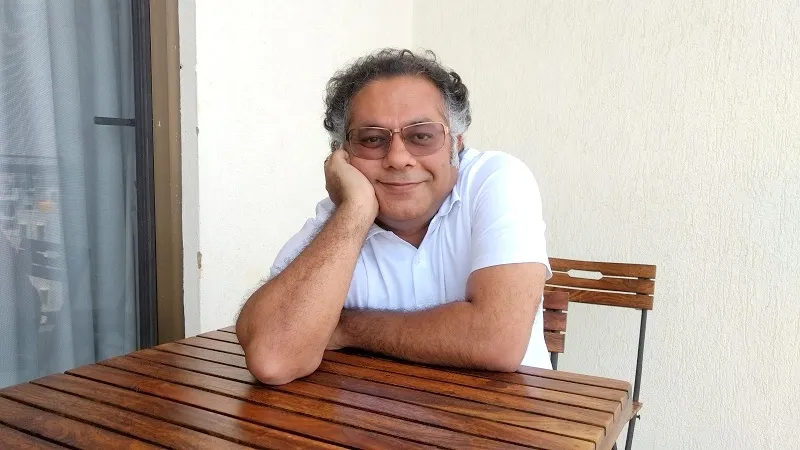
Honesty, fairness, and humility
Throughout his life, Sandipan has avoided debates and taken an intuitive call whether it's worth debating. He’ll get into one only if he sees a chance of improvement.
Sandipan counts honesty, fairness, humility, and impact as some of the guiding principles and values of his life. He defines them as follows:
- Honesty: I believe in transparency. I believe in the 20:80 principle, where 20 percent of my thoughts (and efforts) should be about the present and 80 percent about what's going to happen in five to ten years’ time.
Impact: I measure my success by how many people's lives I'm touching through my work. It's eight or nine million at the moment(based on MoneyControl and Justdial’s user bases). I would love to see it reach 25 million by the time I'm 50. He says,At the end, you'll realise that you're here only for respect and to make a difference to the world. In absence of any other measure, money becomes a measure of respect. It's just a comparative measure because it's very numerative and easy to calculate, but actually, you hanker for respect and impact.
- Fairness: Be fair to everyone, and don't think that you're not a part of everyone. Be fair to yourself as well. It shouldn't be sacrificial fairness.
You can connect with Sandipan on LinkedIn.


![[Techie Tuesdays] Sandipan Chattopadhyay — the statistician behind the 160x growth of Justdial](https://images.yourstory.com/cs/wordpress/2017/03/Techie-Tuesday_Sandipan-Chattopadhyay.jpg?mode=crop&crop=faces&ar=2%3A1&format=auto&w=1920&q=75)




